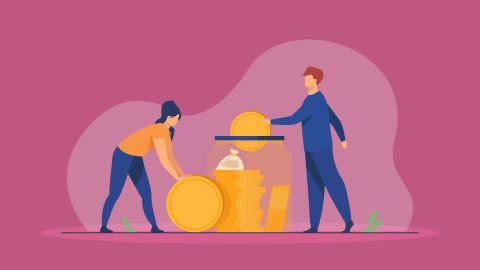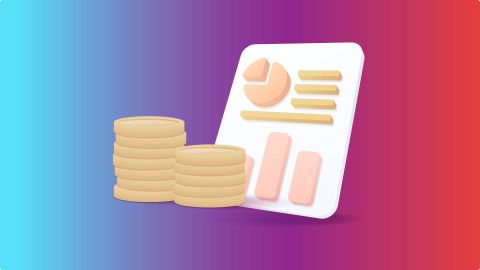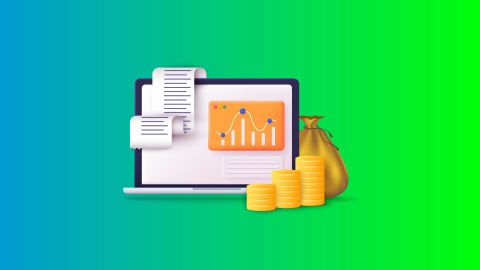Think of non-current assets as the backbone of a company’s long-term success. These are not quick-cash resources but investments that help a business run and grow for years to come. They include things like property, machinery, patents, and even certain financial investments that a company holds for more than a year. Because they are not easily converted into cash without risk of loss, non-current assets are considered illiquid. But that’s the point their main purpose is to keep business operations running smoothly and support future growth. For example, manufacturing equipment produces goods, while patents and trademarks help maintain a competitive edge.
Even though they lack the flexibility of current assets, their importance cannot be overstated. Managing them well can be the difference between a company that sustains growth and one that struggles to keep up. In this article, we’ll explore the basics of non-current assets, their types, significance, and how they differ from current assets. Understanding the role of non-current assets can also guide investors in assessing a company’s long-term stability, much like analysing diversified investment portfolios for steady growth. Compare Mutual Fund Options Now!
What are non-current assets?
Non-current assets, sometimes called fixed assets, are long-term resources a business invests in with the intention of using them for more than a single fiscal year. They aren’t meant to be sold quickly or converted into cash — instead, they help keep the company functional and competitive in the long run.
You’ll find them recorded on the balance sheet, often including property, plant and equipment, intangible assets like patents, and long-term investments. These are big-ticket purchases that usually require significant capital and are critical for day-to-day operations over an extended period.
From an accounting perspective, their value is reduced over time through processes like depreciation (for tangible assets), amortisation (for intangible assets), or depletion (for natural resources). These adjustments reflect their gradual wear, consumption, or expiry, and they also help assess the company’s financial health. Evaluating non-current assets alongside other financial metrics can offer a balanced view of a company’s health, similar to reviewing various fund categories before investing. Open Your Mutual Fund Account Today!
Types of non-current assets
Non-current assets generally fall into three main categories, each serving a different but equally important role:
- Tangible assets – These are physical items you can see and touch, like land, buildings, machinery, and vehicles. They make production, logistics, research, and other operations possible. While most tangible assets lose value over time due to depreciation, land is an exception and can often appreciate.
- Intangible assets – These lack physical form but can be just as valuable. Examples include patents, trademarks, copyrights, and goodwill. A pharmaceutical company with a patented drug formula, for instance, can generate income by licensing it to others.
- Natural resources – Sometimes called wasting assets, these come from the earth, such as oil, minerals, natural gas, or timber. Their value is accounted for using depletion, which spreads the cost over their useful life based on how much is extracted.
How to calculate non-current assets
To see where non-current assets fit into a company’s finances, let’s look at how they appear on the balance sheet. Current assets, like cash and inventory, are listed first because they can be converted into cash within 12 months. Non-current assets, on the other hand, are listed below them, as they are held for the long term.
For example:
Assets |
Amount |
Current assets |
|
Cash and cash equivalents |
50,000 |
Short-term investments |
30,000 |
Accounts receivable |
40,000 |
Inventory |
20,000 |
Non-current assets |
|
Long-term investments |
80,000 |
Property, Plant, and Equipment |
200,000 |
Goodwill |
50,000 |
Accumulated Depreciation |
-50,000 |
Total Assets |
420,000 |
Accurately calculating asset values can help spot long-term stability patterns, much like using portfolio trackers to monitor mutual fund performance over time. Start Investing or SIP with Just Rs. 100!
Non-current assets examples
Non-current assets are more than just buildings and equipment they can include anything the business holds for more than a year that adds long-term value.
Some common examples include:
- Property, Plant, and Equipment (PPE): Land, buildings, machinery, and vehicles.
- Intangible assets: Patents, trademarks, copyrights, and goodwill.
- Long-term investments: Shares, bonds, or stakes in other companies meant to be held for years.
- Deferred tax assets: Tax benefits the company can use in the future.
- Natural resources: Oil reserves, mineral deposits, or timber.
Significance of non-current assets
Non-current assets matter for several reasons:
- Long-term stability: They represent investments that will keep contributing to revenue for years.
- Operational capacity: Without these assets, production and service delivery could slow or stop.
- Attracting investors: Strong non-current asset holdings can signal potential for steady future earnings.
- Creditworthiness: A solid asset base can help a company secure loans or better borrowing terms.
Evaluating their significance can guide better long-term decision-making, just as reviewing fund performance and risk levels helps in creating balanced mutual fund investments. Compare Mutual Fund Options Now!
Financial ratios using non-current assets
Looking at non-current assets in isolation doesn’t give the full picture — that’s where financial ratios come in. These ratios help investors, managers, and analysts understand how efficiently a company uses its long-term assets to generate sales or how much of its equity is tied up in them.
Two key ratios often used are:
1. Non-current asset turnover ratio – This measures how effectively fixed assets are being used to produce revenue.
Formula: Non-current asset turnover ratio = Total Sales Revenue / Net Book Value of Non-current Assets
2. Non-current assets to net worth – This shows how much of a company’s equity is invested in its long-term assets.
Formula: Non-current Assets to Net Worth = Non-current Assets / Total Net Worth
Difference between current and non-current assets
While both are important, current and non-current assets serve different purposes.
Current assets |
Non-current assets |
Converted to cash within a year |
Held for long-term use |
Meet short-term liquidity needs |
Bought for future or ongoing needs |
Valued at current market price |
Valued at cost minus depreciation |
Rarely re-evaluated except inventory |
Require regular evaluation |
Examples: cash, accounts receivable, inventory |
Examples: land, buildings, machinery, patents |
Advantages of non-current assets
Owning non-current assets brings several benefits to a business:
- Long-term value creation: They generate revenue over many years, helping sustain growth.
- Support operational efficiency: Machinery, property, and equipment keep production and services flowing smoothly.
- Enhance credibility: Assets like patents or valuable property can improve market reputation and investor confidence.
- Tax benefits: Depreciation and amortisation can reduce taxable income.
- Barrier to competition: Exclusive assets like trademarks or patents can give a competitive edge.
- Potential appreciation: Some assets, like land, may increase in value over time.
- Collateral for borrowing: They can be pledged to secure loans when needed.
Disadvantages of non-current assets
While they bring stability and value, non-current assets have their downsides too:
- Illiquidity: They can’t be turned into cash quickly, which limits flexibility in emergencies.
- High initial investment: Buying assets like buildings or machinery demands significant capital.
- Depreciation and obsolescence: Over time, they lose value or become outdated due to technology changes.
- Maintenance costs: Assets like property or equipment require regular upkeep, which adds to expenses.
- Tied-up capital: Money invested here isn’t available for short-term opportunities.
- Limited adaptability: Long-term investments may make it harder to pivot when markets change.
- Risk of impairment: Market or operational issues can cause sudden drops in asset value.
- Dependence on financing: Companies may need loans or investors to afford such purchases, increasing debt or diluting ownership.
Reporting non-current assets
On the balance sheet, non-current assets appear under the long-term assets section. They’re recorded at historical cost, which includes purchase price and related expenses to make them operational. Over time, adjustments for depreciation or amortisation reduce their book value, while revaluations for certain appreciating assets like land may be noted separately.
Financial reports often include detailed notes on these assets — describing their nature, valuation methods, and depreciation schedules. This transparency helps investors and stakeholders assess a company’s stability and long-term potential. Just as clear financial reporting builds trust for a company, reviewing transparent mutual fund factsheets and performance reports can help investors make informed and confident decisions. Explore Top-Performing Mutual Funds!
How are non-current assets accounted for?
The accounting process begins by recording the acquisition cost, including purchase price and any related expenses like transport or installation. Tangible assets are depreciated over their useful life, while intangible assets are amortised. Impairment testing ensures that their recorded value doesn’t exceed what they could realistically fetch in the market.
Some assets can be revalued to reflect fair market prices. When a company sells a non-current asset, any gain or loss is recorded in the financial statements by comparing sale proceeds to its book value.
Key takeaways
- Non-current assets are long-term investments essential for sustained growth.
- They include tangible, intangible, and natural resource assets.
- They’re recorded at historical cost, adjusted for depreciation, amortisation, or depletion.
- They strengthen operational efficiency, credibility, and borrowing capacity.
- Ratios like asset turnover and asset-to-net-worth help assess their efficiency.
Conclusion
Non-current assets aren’t just numbers on a balance sheet they’re the backbone of long-term business stability. They enable companies to operate, grow, and remain competitive over time. By understanding how they’re valued, managed, and leveraged, stakeholders can gain a clearer picture of a company’s true financial health and growth potential. In the same way, evaluating mutual fund holdings for their composition, tenure, and performance can help investors align with their financial goals while balancing stability and growth prospects. Save Taxes with ELSS Mutual Funds!
If you are an investor, a promising avenue for long-term investment growth is mutual funds. And if you are also starting your journey with Mutual Funds then the Bajaj Finserv Mutual Fund Platform will help you explore the market. It has more than 1000+ mutual funds listed on its platform, which helps you compare mutual funds to find the best one for your needs. It also offers an SIP Calculator or Lumpsum calculator to so that you can make informed decisions and pursue your financial goals with greater precision and confidence.




